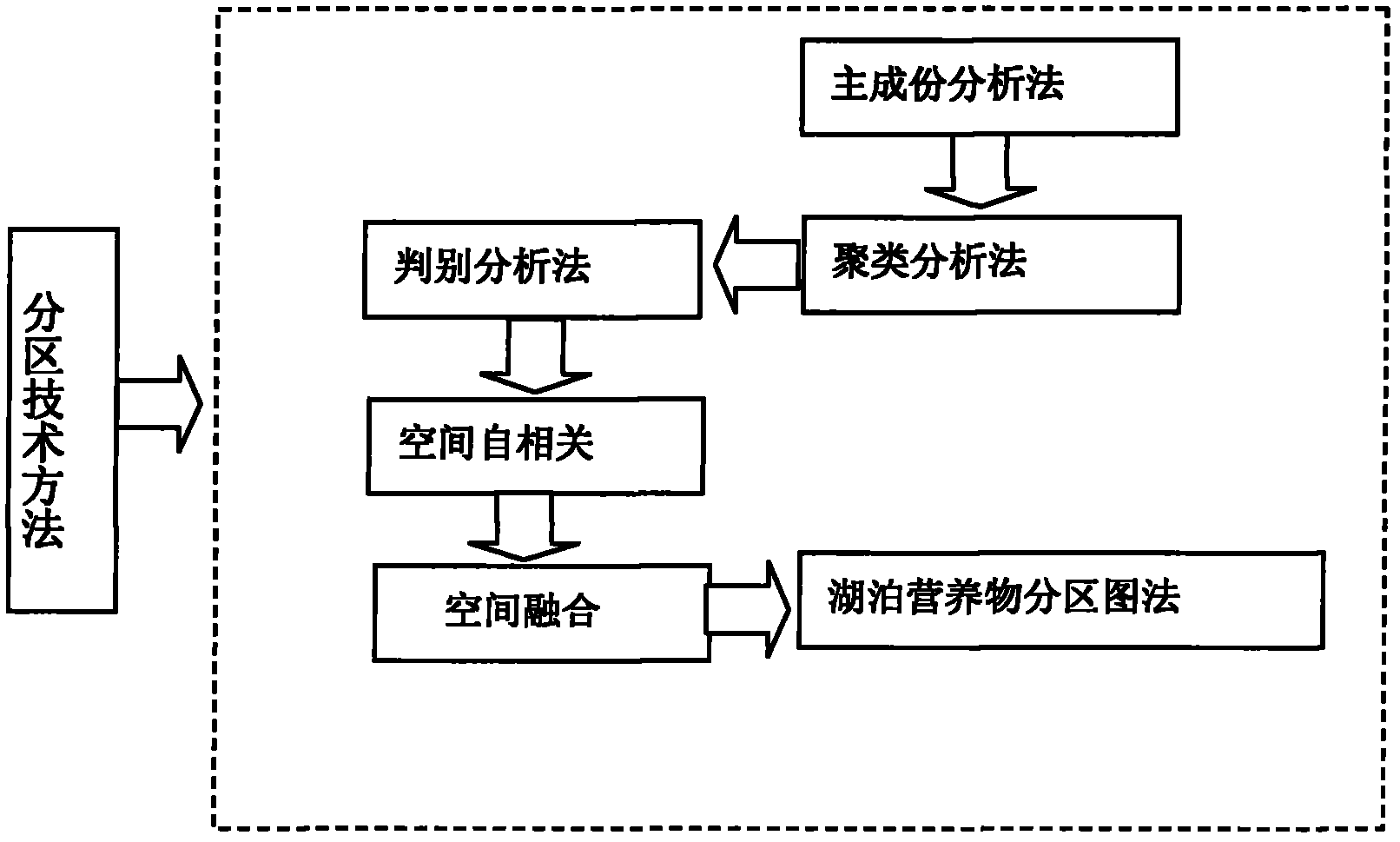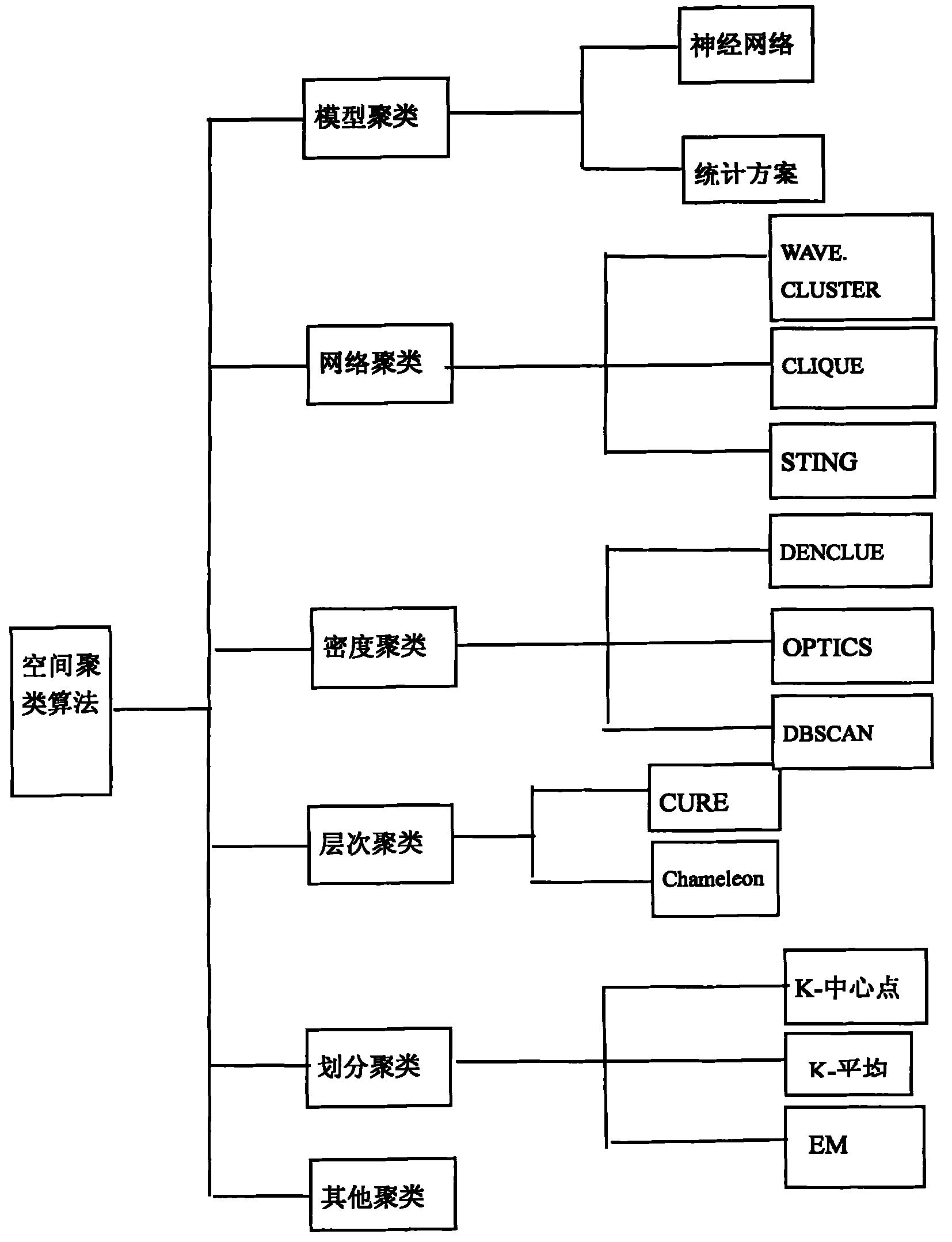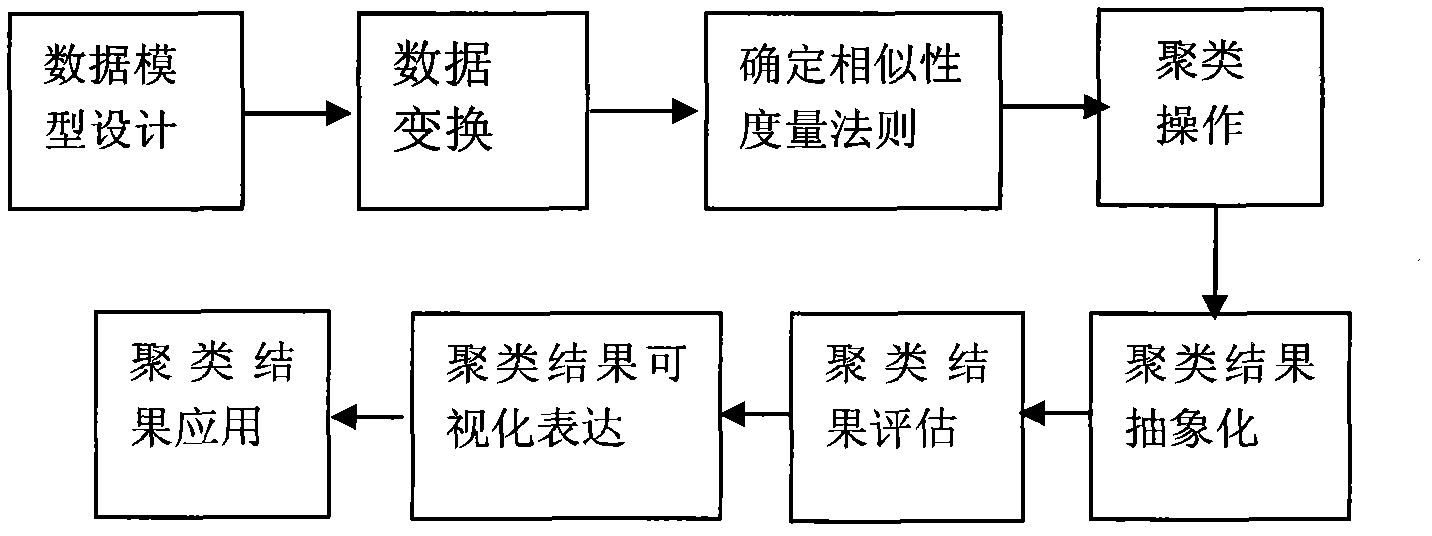Technique method of lake nutrient zoology zone boundary identification
An ecological zoning and boundary identification technology, applied in the field of lake nutrient ecological zoning, can solve the difficulty of determining the weights of spatial attributes and thematic attributes, ensuring that thematic attributes are similar, and cannot truly and accurately define lake nutrient ecological zoning. border issues
- Summary
- Abstract
- Description
- Claims
- Application Information
AI Technical Summary
Problems solved by technology
Method used
Image
Examples
Embodiment Construction
[0021] Combine below Figure 4 , the specific embodiment of the present invention will be further described in detail. The following is used to illustrate the present invention, but not to limit the scope of the present invention.
[0022] Figure 4 It is a flow chart of the dual-constraint space clustering adopted by the present invention. like Figure 4 Shown, the present invention comprises the following steps:
[0023] S1, preprocessing and feature processing of spatial data, including the following two steps:
[0024] S11, explain the concept of dual-constraint spatial clustering and define it mathematically.
[0025] Double-constraint spatial clustering is clustering on the spatial domain and the attribute domain at the same time, requiring the clustering results to be continuous in the spatial domain and similar in the attribute domain. Double-constraint clustering aims to discover the distribution rules of spatial aggregation, extension, and change of attributes ...
PUM
 Login to View More
Login to View More Abstract
Description
Claims
Application Information
 Login to View More
Login to View More - R&D
- Intellectual Property
- Life Sciences
- Materials
- Tech Scout
- Unparalleled Data Quality
- Higher Quality Content
- 60% Fewer Hallucinations
Browse by: Latest US Patents, China's latest patents, Technical Efficacy Thesaurus, Application Domain, Technology Topic, Popular Technical Reports.
© 2025 PatSnap. All rights reserved.Legal|Privacy policy|Modern Slavery Act Transparency Statement|Sitemap|About US| Contact US: help@patsnap.com



